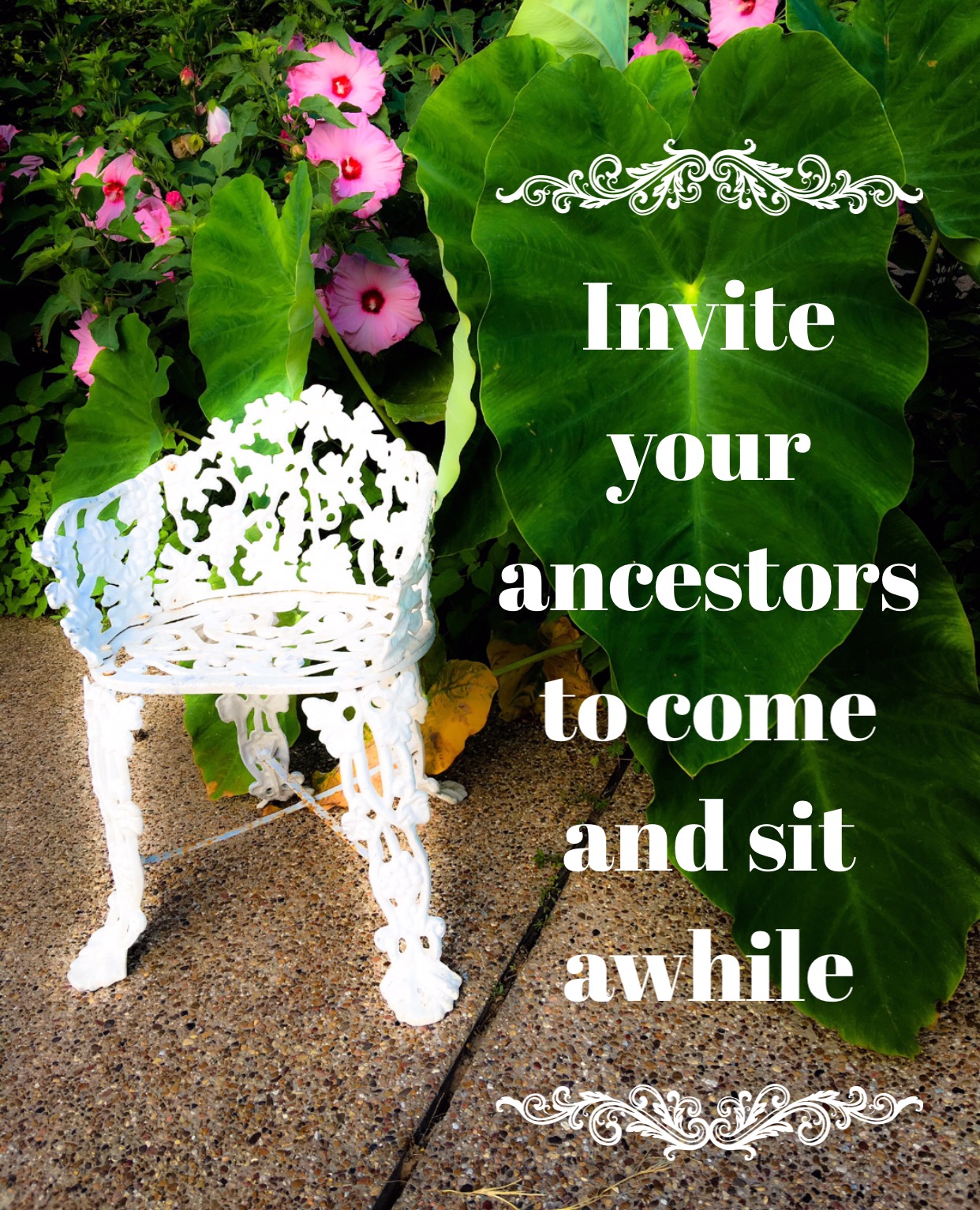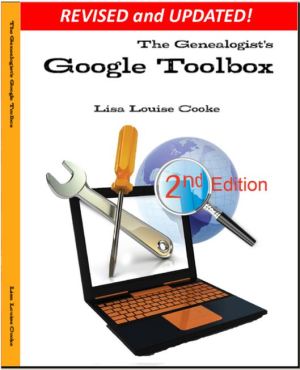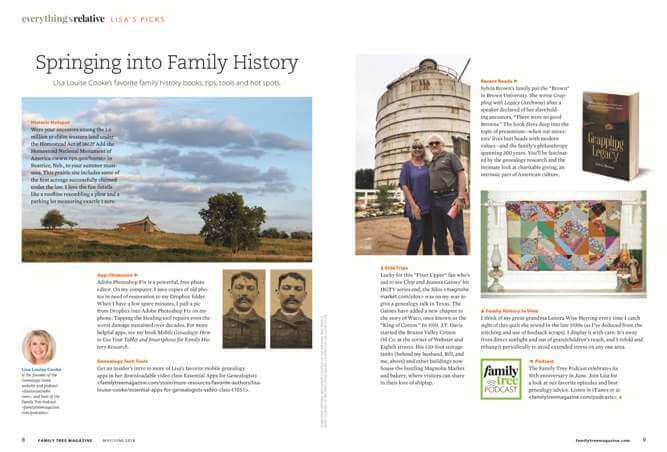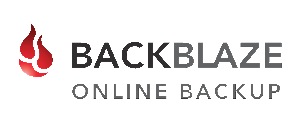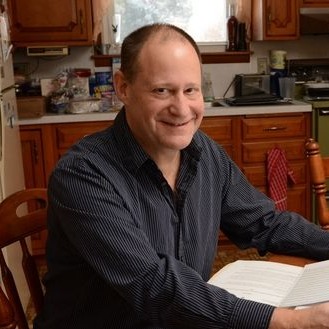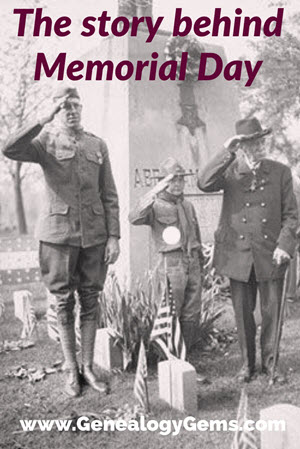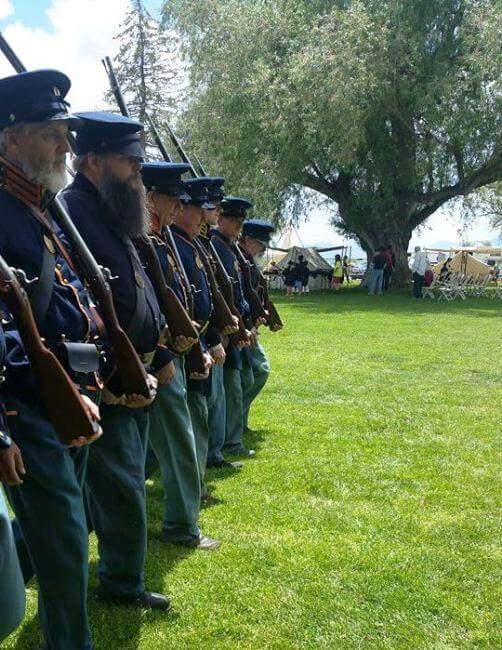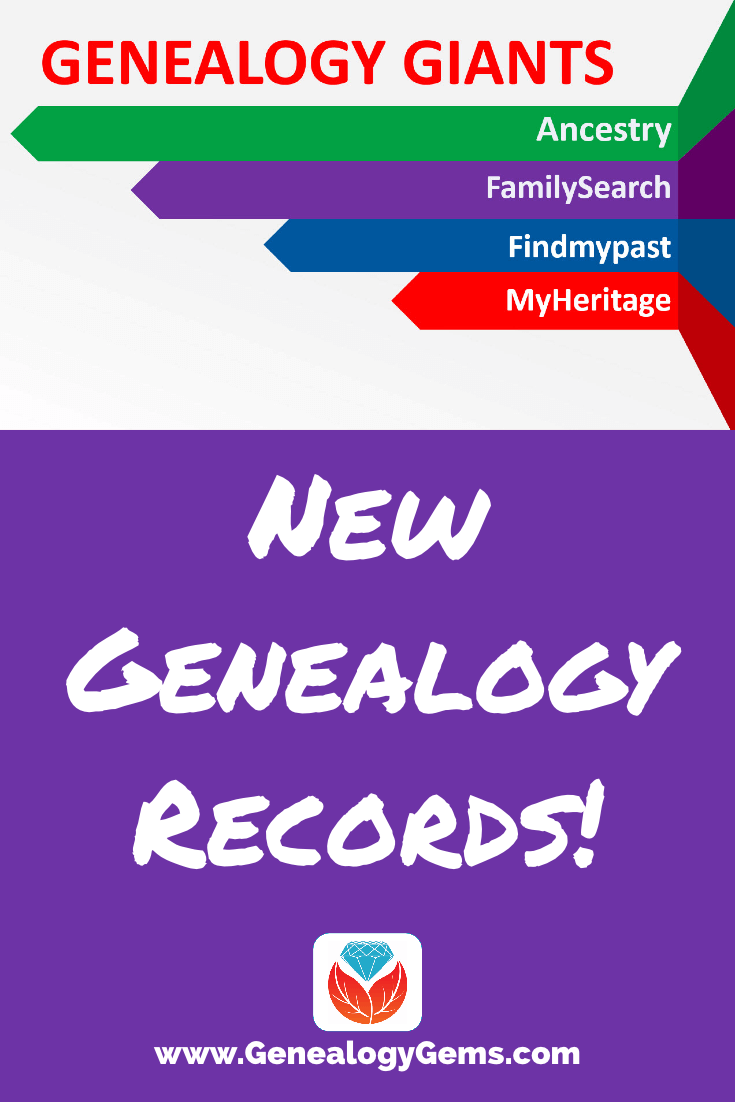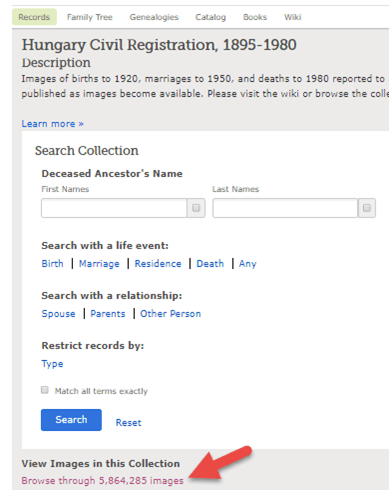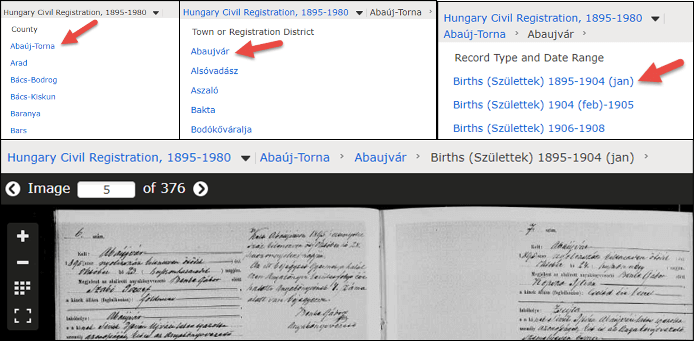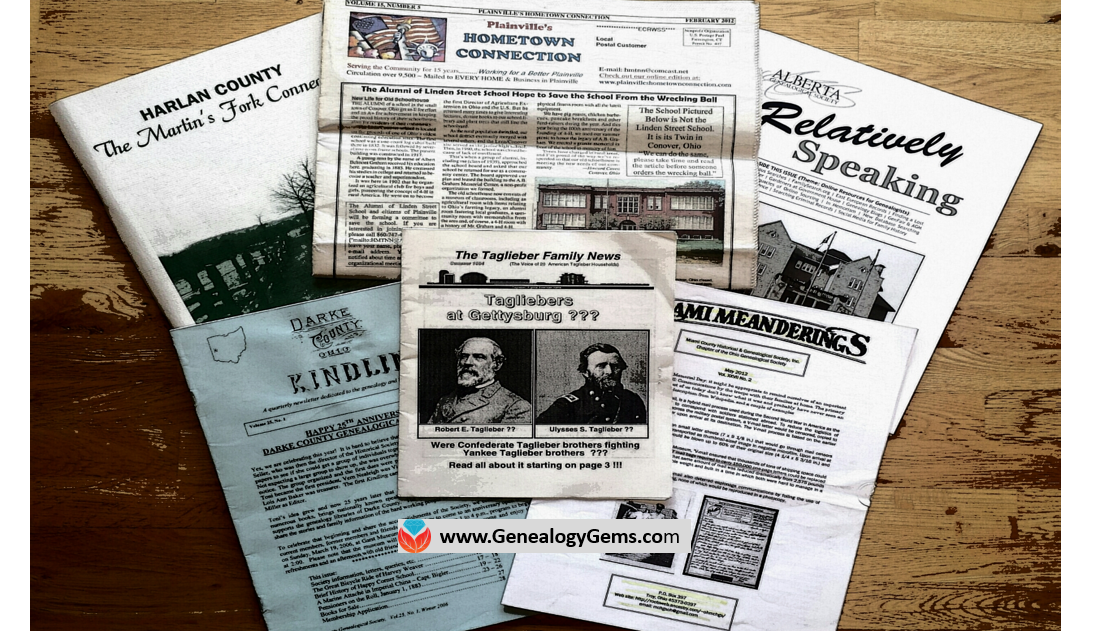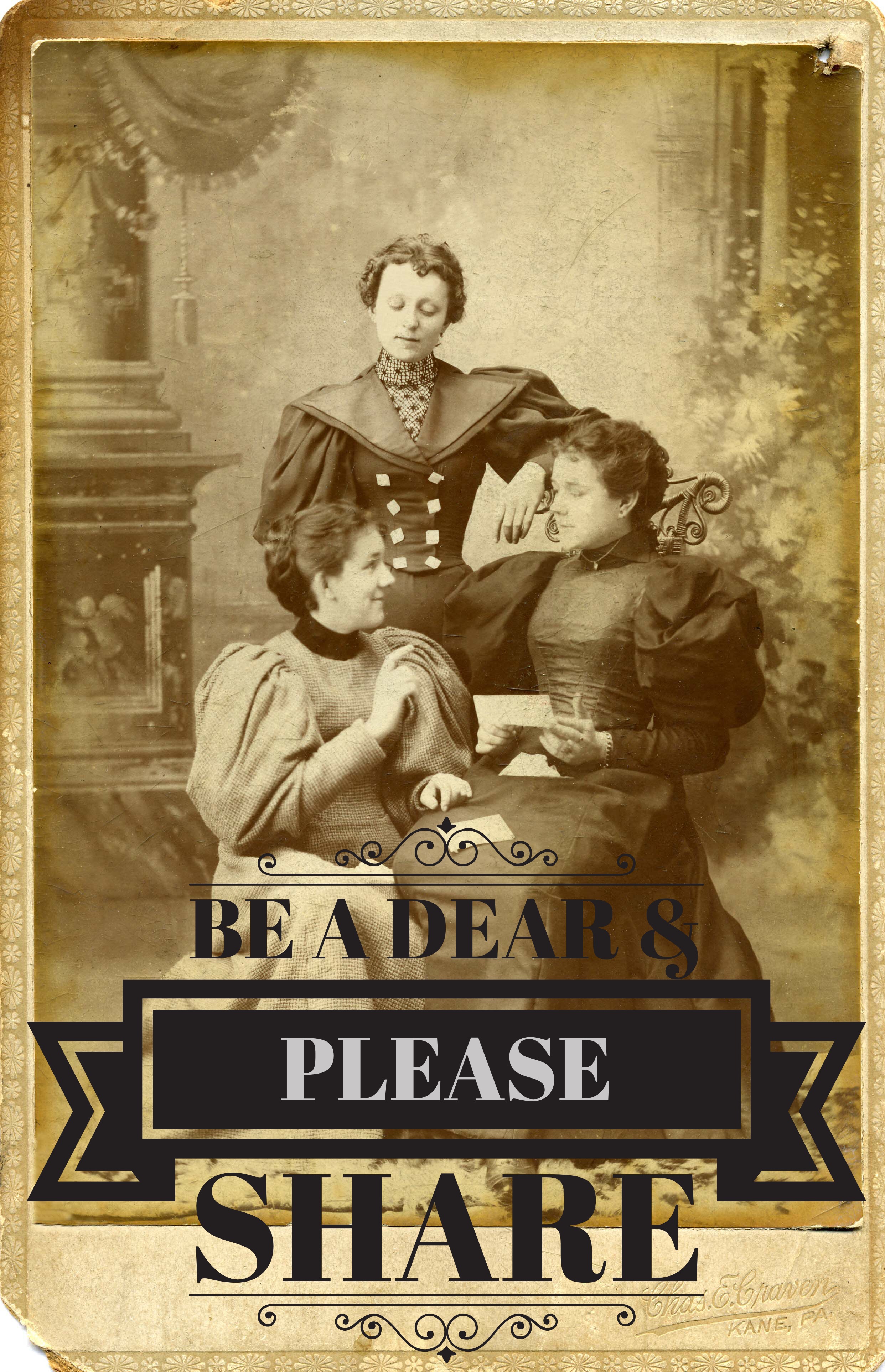by mbarker | Jun 27, 2018 | 01 What's New, Archive Lady, Organization |
Preserving old family letters is one of the best things you can do to be sure their precious content is available to future generations. Follow these easy steps from The Archive Lady, Melissa Barker, to organize and preserve the old correspondence in your family history archive.
Writing letters has become a thing of the past! If you are fortunate enough to have a collection of old family letters, you have a true treasure.
In addition to digitizing them, physically preserving them is one of the best things you can do to save the genealogical information contained in those old family letters. Here are some simple steps to preserve the old letters that you may have.
Preserving Old Letters in 4 Easy Steps
1. Arrange letters chronologically.
You can go by the date on the letter itself or by the postmark date on the envelope.
It is important to put your old letters in chronological order because sometimes there is information in those letters that continue from letter to letter and you want to make sure you read them in the order originally written.
If you have groups of letters from different events such as WWII letters, college letters, or vacation letters, you could group them together and then organize each grouping by date.
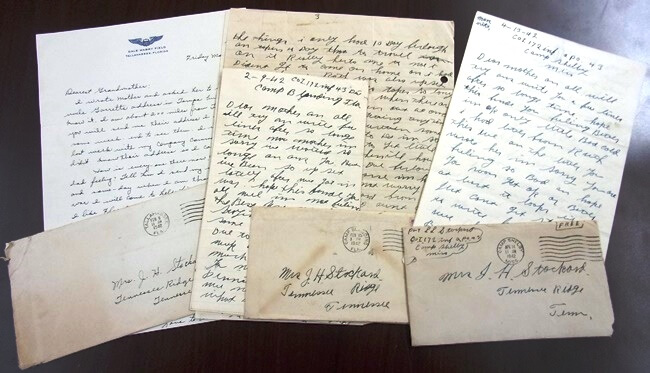
(Courtesy Houston County, TN. Archives.) Old letters like these need careful preservation.
2. Unfold old letters.
Once you have put your letters in chronological order, it’s time to do some preservation work.
I am asked all the time about letters and whether to leave them folded and in their envelopes. I can tell you that all archivists remove the letters from the envelopes and archive them unfolded. The creases made by folding and unfolding letters can cause damage and eventually those creases get weak and can cause the letters to tear into pieces. It is always best to unfold old family letters.
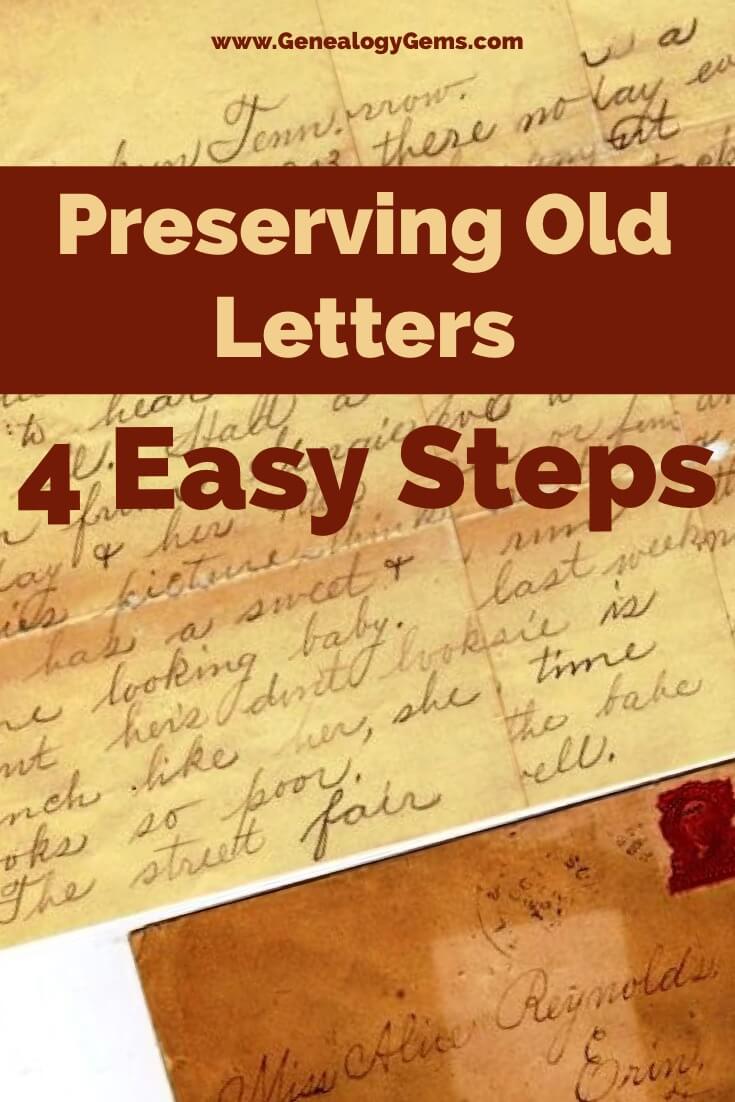
3. Encapsulate the old letters.
The term encapsulates means “to enclose something or to completely cover something.”
Now that you have unfolded and flattened your letters, you will want to encapsulate them in archival safe sleeves that can be purchased at any online archival supply store. Look for reputable preservation supply companies like Gaylord.
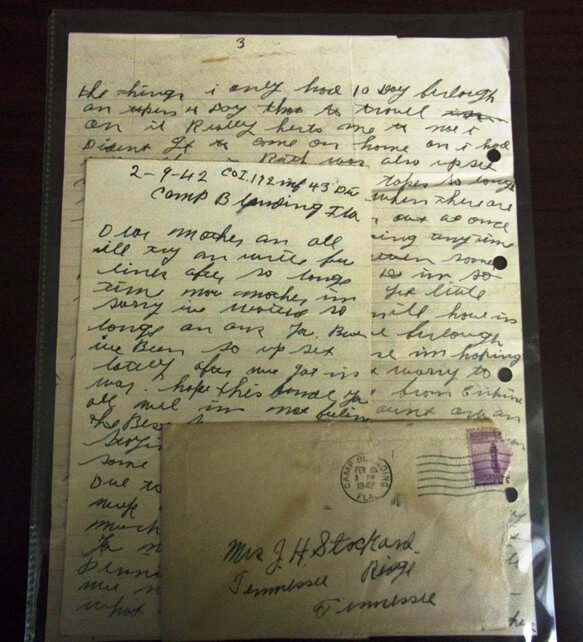
An encapsulated letter
Be sure to put the envelope with the letter in the same sleeve so that it doesn’t get lost or mixed up with another letter that it doesn’t belong to. When you’re working with many letters in a collection, the letter can easily be separated from the envelope. But envelopes may include crucial details such as dates, the identity and address of the writer, and interesting postmarks, so you want to keep them together.
4. Filing and storing old letters.
After you have put your letters in chronological order, unfolded them and encapsulated them, it is now time to file and store them.
Archivists prefer to put their encapsulated letters into archival file folders and then into archival boxes, being sure to keep the chronological order intact. (Click here for Gaylord’s Family Archives Document Preservation Kit, complete with archival folders and an archival box.)
This process gives you three layers of protection for your letters to ensure they are completely preserved and protected from bugs, dust, and anything else that could get to them and damage them. Following these guidelines to preserving your family letters will ensure they are protected and saved for you to enjoy and for your future descendants to enjoy!
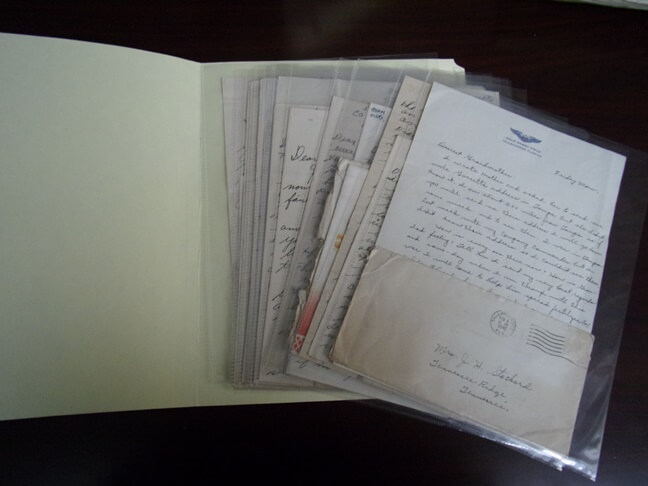
Next step: Digitize your old family letters.
Old letters can fall prey to many unfortunate situations. Ink can fade and paper can crumble. If this happens, the messages on your old letters may eventually be lost, despite your best efforts. It’s also possible that the entire file folder full of the original letters could be lost, damaged, or even destroyed!
Digitizing your old family letters lets you digitally preserve the content for future generations. It’s the best way to added another layer of protection. Duplication is a fundamental key to preservation.
In the free Genealogy Gems Podcast episode 144, host and producer Lisa Louise Cooke talks with The Family Curator Denise Levenick about digitizing and organizing your family history. Click here to hear their conversation and start preserving your own family letters and other original documents.
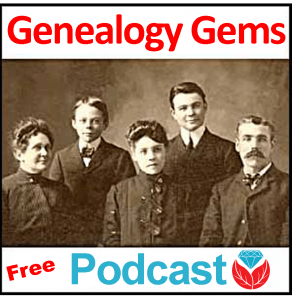
You’ll Never Regret Preserving Your Old Family Letters
As you can seem it’s actually pretty easy to preserve your old family letters. I encourage you to get started today so that you’ll never have regrets in the future.
About the Author:
Melissa Barker is a Certified Archives Records Manager, the Houston County, Tennessee Archivist and author of the popular blog A Genealogist in the Archives and an advice columnist. She has been researching her own family history for the past 27 years.
Images courtesy of Melissa Barker and Houston County, TN Archives.
Disclosure: As an Amazon Associate, Genealogy Gems earns from qualifying purchases. This article contains affiliate links and Genealogy Gems will be compensated if you make a purchase after clicking on these links (at no additional cost to you). Thank you for supporting Genealogy Gems!
by michaelstrauss | May 24, 2018 | 01 What's New, Holidays, Military
The history of Memorial Day–formerly Decoration Day–and what he will be doing to honor it are shared here by Military Minutes contributor Michael Strauss. We also give you quick links to more free family history articles on researching your ancestors who gave the ultimate sacrifice on the battlefield.
(Image right: Gravesite in Oak Woods Cemetery, Chicago, IL. Decoration Day, 1927. Photo: Chicago Daily News)
History of Memorial Day
In 1865, just after the close of the Civil War, a local druggist in Waterloo, New York suggested placing flowers on the graves of fallen soldiers in his community.
The following year, another area resident, General John B. Murray, led the small village in putting flags at half-mast and decorating the gravestones of soldiers buried in the town’s three cemeteries. They repeated their efforts the following year. Many other communities in both the North and South also honored their war dead during this time period.
General John A. “Black Jack” Logan spearheaded the idea of a national day of remembrance for fallen Civil War soldiers in 1868. Logan, a former Union General, was the National Commander of the Grand Army of the Republic (GAR), which constituted living veterans of the war. On May 5, 1868, the GAR issued General Order No. 11 to designate May 30, 1868 as the day to decorate and commemorate the graves of fallen comrades of the late Civil War.
The wording of the order is very specific: “Let us then at the time appointed gather around their sacred remains and garland them with choicest flowers of springtime…Let us raise above them the dear old flag they saved from dishonor…in this solemn presence renew our pledge to aid and assist those whom they have left among us…the soldier’s and sailor’s widow and orphan.” This order later became known as the “Memorial Day Order” and can be read on the website of the U.S. Department of Veteran Affairs as part of the National Cemetery Association.
On this date at Arlington National Cemetery, more than 20,000 gravestones of both Union and Confederate veterans were remembered. General James A. Garfield (who later became President of the United States) and other political leaders spoke to an audience of more than 5,000 persons. In following years, May 30th became known as Decoration Day, a national day of remembrance of the Civil War dead.
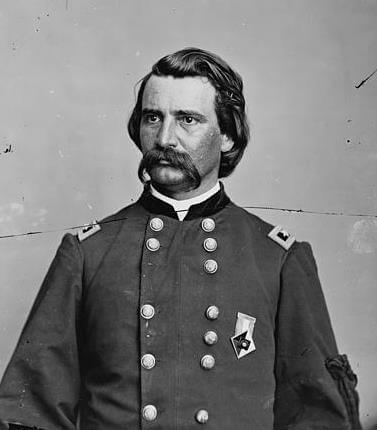
General John A. “Black Jack” Logan. Library of Congress image.
After the end of World War I in 1918, the scope of Decoration Day expanded to include all war dead since the Revolutionary War. The name gradually gave way to “Memorial Day,” a term first used in 1882 that didn’t become more generally accepted until after the end of World War II. A 1968 Act of the United States Congress, which went into effect in 1971, formally calendared the dates of several national holidays, including Labor Day, Veterans Day, and Memorial Day—the latter to be held in perpetuity on the last Monday in May. (Veterans Day, honoring all veterans who served rather than just our war dead, is held on November 11th.)
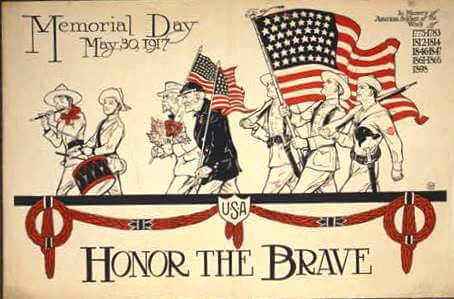
1917 poster, Library of Congress image.
Interestingly, not every part of the United States fully supported Decoration Day. The Civil War created divisions even in peacetime, long after the guns fell silent in 1865. A number of Southern states have over the years honored their own Confederate dead on specific dates. In Mississippi, for example, they remember Memorial Day the last Monday of April. Both North Carolina and South Carolina observe this date on May 10th. In Virginia, the last Monday of May is observed as with most of the country, but it is often called Confederate Memorial Day.
For a little more history (and some great historical re-enactment footage), enjoy this quick video.
How I will be honoring Memorial Day
Regardless of the name given this holiday, on Memorial Day here in Utah I will remember and honor those who sacrificed so much for our country by attending a free public event at Camp Floyd. I will be wearing my Civil War uniform with other members of the Utah Living History Association as we recreate and experience camp life; drill; and fire our period weapons to remember when the camp was occupied by the Union Army from 1858-1861. I am the second person in the left in this 2016 photo from the Utah Living History Association. We strive for historical accuracy in our representation of the men stationed at this camp in the years immediately preceding the Civil War. (With the start of the war, the camp was abandoned and the men stationed here moved back East to the fighting. Next to the museum at the camp sits a small rural cemetery to honor the burials of 85 men who died from 1857-1861 who were stationed at the camp while serving with the United States Army.)
Memorial Day isn’t just about remembering those soldiers who died in battle, but about honoring all veterans who have honored us with service. We give this honor—regardless of sectional differences—to those who lost their lives during both wartime and peacetime periods.
Michael Strauss, AG is the principal owner of Genealogy Research Network and an Accredited Genealogist since 1995. He is a native of Pennsylvania and a resident of Utah and has been an avid genealogist for more than 30 years. Strauss holds a BA in History and is a United States Coast Guard veteran.
by Sunny | May 11, 2018 | 01 What's New, Ancestry, FamilySearch, Findmypast, Genealogy Giants Websites, Records & databases
Search millions of new records on Ancestry.com, FamilySearch & Findmypast, three of the Genealogy Giants. Find your family history in Australia, Brazil, Canada, Denmark, England, Germany, Hungary, New Zealand, Panama, Poland, Sweden, the U.S., Wales and in PERSI, the Periodical Source Index.
Welcome to Genealogy Gems’ weekly roundup of new and updated genealogy records! Browse the lists below to see what’s become available recently at three of the Genealogy Giants, Ancestry.com, FamilySearch.org & Findmypast.com.
New records on Ancestry.com
Australia. About 7 million records total appear in Ancestry.com’s new Australian vital records indexes, Victoria, Australia, Marriage Index, 1837-1950 and Victoria, Australia, Death Index, 1836-1988. According to their collection descriptions, these records come from The Victorian Registry of Births, Deaths, and Marriages, Melbourne, Victoria, Australia.
England and Wales. The 1939 England and Wales Register is now on Ancestry.com! With nearly 46 million records, it’s a de facto national census conducted just before World War II. (The 1939 Register is also searchable at Findmypast.com and MyHeritage.com.)
Poland. In partnership with the U.S. Holocaust Memorial Museum, Ancestry.com has published Poland, Modliborzyce Ghetto Register Books, 1939-1944. These records are part of the USHMM’s collections and are described by them as “Documents of the Jewish Council in Modliborzyce (administrative district of Janów Lubelski), including alphabetical name list for January through September 1942.”
New Zealand. More than 350,000 records appear in the new Ancestry.com collection, New Zealand, World War I Service Records, 1914-1920. According to the collection description, “This database contains New Zealand Defense Force (NZDF) Personnel Files for all known New Zealanders who served in the First World War. The records contain information of interested to personal and professional researchers alike, including: transfers, promotions, punishments, medals and honors received, health status and medical history and other biological information. Military service files typically include several documents. The primary document which has been indexed and is searchable by name is the Attestation Sheet. The attestation sheet includes personal information about the individual who served….Additional documentation may be found in the files, including correspondence.”
North America. An even larger collection of church records relating to Swedes, or at least, Swedish emigrants, is Ancestry.com’s U.S., Evangelical Lutheran Church in America, Swedish American Church Records, 1800-1946. Here’s a sample image:
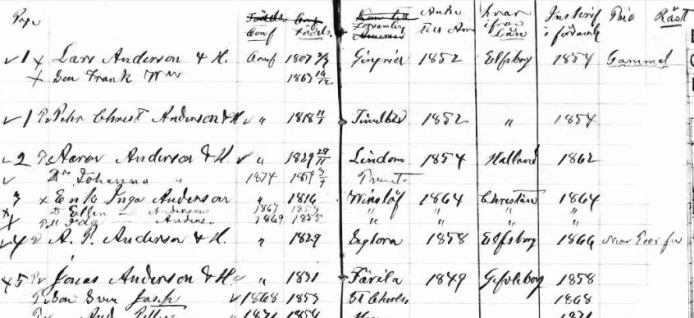
This collection boasts 3.5 million records from the Swenson Swedish Immigration Research Center at Augstana College in Rock Island, Illinois. From the collection description: “The records in this collection consist of administrative records from select affiliates of the Evangelical Lutheran Church in America. There are also select records from Canada. Indexes have been provided for baptisms, marriages, burials, and membership records (arrivals, dismissals, and member lists), as well as congregational histories and biographical files of church leaders. The member lists, in particular, have a wealth of information, including vital dates and emigration information. Some member lists may include the location in Sweden an individual or family was originally from. Records are written in either English or Swedish.”
Sweden. Close to 2 million indexed records appear in a new series of Swedish church record databases on Ancestry.com:
- Uppsala, Sweden Church Records,1613-1860;
- Kalmar, Sweden, Church Records, 1625-1860;
- Södermanland, Sweden, Church Records, 1640-1860
- Västernorrland, Sweden, Church Records, 1650-1860
- Jönköping, Sweden, Church Records, 1633-1860
- Sweden, Örebro Church Records, 1613-1918; index 1635-1860
The indexes come from the free Genealogy Giant FamilySearch.org, where you may also find record images pertaining to these records.
United States, New York. Over a million records appear in the new collection, New York State, Death Index, 1957-1968. FYI, this database is also available to search on the New York state government website for free, but I find it much easier to search at Ancestry.com (and Ancestry’s powerful and flexible search technologies may help you find people’s names who may appear differently than you expect).
New records on FamilySearch.org
Brazil. Nearly 140,000 indexed names have been added to an existing collection on FamilySearch.org, the always-free Genealogy Giant: Brazil, Rio de Janeiro, Civil Registration, 1829-2012. Among the records are “births, marriages, deaths and indexes created by various civil registration offices in the state of Rio de Janeiro.” This collection is partially-indexed: browse the records to see what’s available for your ancestor’s locale. (See below for instructions on how to do this.)
Denmark. About 12,000 indexed names have been added to Denmark, Copenhagen City, Civil Marriages, 1739-1964, Index 1877-1964. According to the site, the collection includes “marriage licenses and records for the city of Copenhagen for the years 1739 to 1964.” However, the detailed collection description in the FamilySearch wiki includes some conflicting information about the dates covered. Go ahead and search anyway—and follow the wiki tips for getting the most out of the collection.
Germany. Over 1.1 million indexed records have been added to Germany, Bavaria, Diocese of Augsburg, Catholic Church Records, 1615-1939. Among the records are baptisms, marriages and burial records from the diocesan archive. Accessibility alert: a notice on the collection description page states that “These images are available to view at Family History Centers. If possible, visit your nearest Family History Center to view the images.” Click here to learn about image access restrictions on FamilySearch.org and click here to find a Family History Center near you (they’re free to use, but most have restricted hours).
Hungary. Nearly 60,000 indexed records have been added to the free collection, Hungary Civil Registration, 1895-1980. These are “images of births to 1920, marriages to 1950, and deaths to 1980 reported to and recorded by civil registrars. Coverage varies by locality. This collection is being published as images become available.”
Check current coverage by browsing the collection (from the bottom of the collection page, as shown here). As shown below, you can browse which regions have available records. Click a region to see which locales have records, and then click a locale to see which specific records are available. Click on individual record sets to page through them in your browser.
Panama. Nearly 150,000 indexed records have been added to Panama, Catholic Church Records, 1707-1973. Among these are “baptisms, confirmations, parish censuses, marriages, pre-marriage investigations, marriage dispensations, deaths, and indexes” created by parishes and dioceses. Again, use the browsing technique shown above to see what records are available for your ancestor’s locale.
New records on Findmypast
Featured global collection: The PERiodical Source Index of all known genealogical and historical periodicals (with especially strong coverage of the U.S.) has added over 10,000 new articles to its subject index (along with 35,148 new digital images of some of those articles). The publications indexed here include historical, genealogical and ethnic newsletters, journals, magazines and other kinds of periodicals.
Individual articles often include biographies, historical sketches, maps and transcripts of cemetery, census, church, court, land/property, institutional, military, naturalization, obituary, passenger, probate, school, tax, vital, voter and will records. You don’t need to have a subscription at Findmypast.com to search the index (and when you see interesting search results you can’t access in full, you have the option to purchase Pay-As-You-Go credits or sign up for a free trial).
Australia. Queensland, Justices of The Peace 1857-1957, with nearly 30,000 records from the Queensland State Archives, lists names of Justices of the Peace, along with oath year and number and archival reference information. Also for the same region, Queensland, Register of Land Sold 1842-1859, includes over 7,100 records of land transactions during Queensland’s colonization era, along with names, locations and property details.
England & Wales. Over 146,400 new images have recently been added to this Genealogy Giant’s unique and extensive Catholic Heritage Archive. Dating to 1575, the collection includes a range of Catholic Record Society publications and a list of Roman Catholics from York in 1604.
England. Findmypast has added parish records for the following locations (and according to the site, the Staffordshire and Shropshire online collections are exclusive to Findmypast):
- Staffordshire Registers & Records. Over 119,500 images of 23 distinct publications of parish registers (which include baptisms, marriages and burials).
- Lancashire Registers & Records. Over 171,000 images of parish registers, court rolls and local histories.
- Shropshire Registers & Records. Over 23,000 images from an eclectic collection of publications date back to the 14th century.
- Surrey Baptisms. Over 476,000 records! Explore transcripts of original parish records for baptisms, birth dates, names and residences of parents and occupations. The collection covers 180 parishes and spans 1538 to 1901. (Findmypast is now home to over two million Surrey records, including baptisms, marriages, monumental inscriptions, court records, probate records and more. Click here to see a list of all collections relating to Surrey.)
North America. Over 800 pages from 12 publications comprise Scots-Irish in North America Histories, a Findmypast collection that covers a variety of date ranges and regions on the Ulster Scots and their descendants in the United States and Canada.
Please help us spread the word!
Every Friday, we share new records on Ancestry.com, FamilySearch.org, Findmypast.com, MyHeritage.com, other websites and digital archives across the internet. We hear from you how these weekly posts help your genealogy. Maybe a specific collection has (finally!) come online. Or maybe you read about an interesting-sounding record type and decide to go searching for something similar for your own family. Will you please help spread the good news by sharing this article on your favorite social media site? And do let us know if any records we mention lead to any discoveries on your family tree. Thanks–you’re a gem!
Disclosure: This article contains affiliate links and Genealogy Gems will be compensated if you make a purchase after clicking on these links (at no additional cost to you). Thank you for supporting Genealogy Gems!


